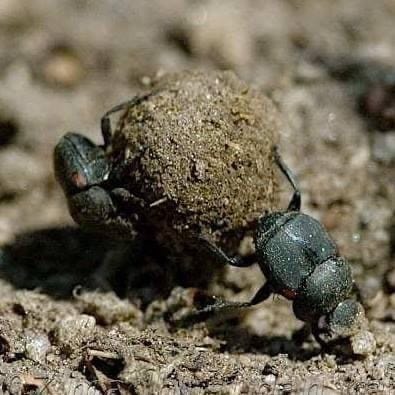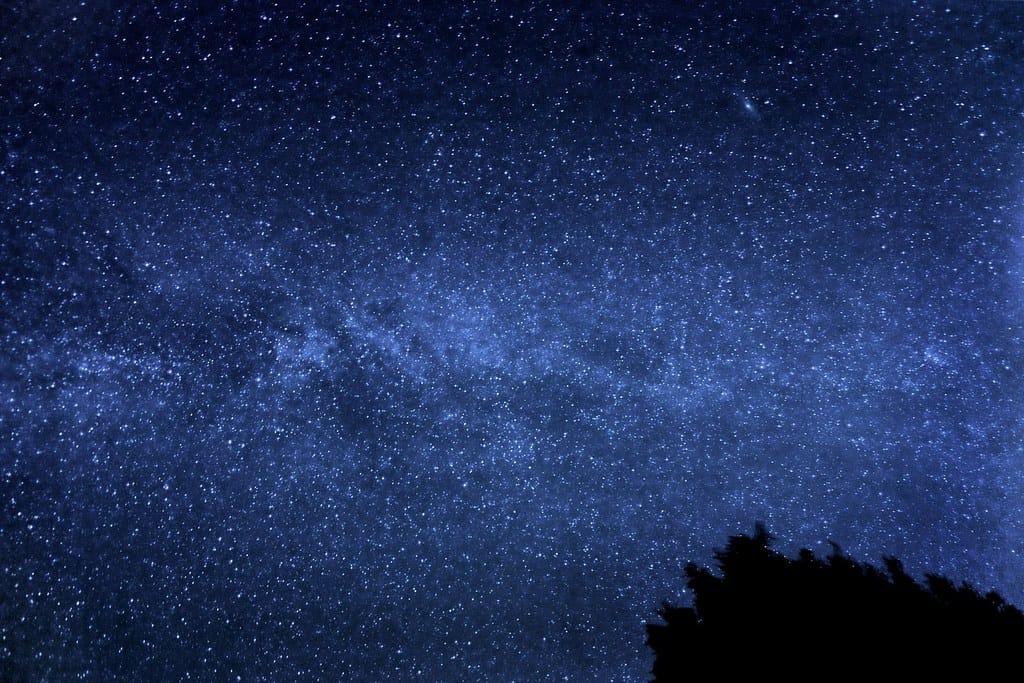- Reconciliation Ecology
- Posts
- What shall I tell the Dung Beetles who ask why we hid their Milky Way?
What shall I tell the Dung Beetles who ask why we hid their Milky Way?
Musings on night in the city

Two Dung Beetles wrestling with a ball of dung in the daytime. Photo by Madhusudan Katti
I have always been a creature of the night. I remember the two years when my home was my college’s hostel near Mumbai’s Marine Drive. I spent countless nights just walking along that fabled “Queen’s Necklace” curving along the Arabian Sea. During the day, Marine Drive would be full of myriad noisy vehicles carrying the heavy flow of people rushing to and from work, just rushing, always rushing. At night though, traffic slowed to a trickle, noise fell away, the ocean breeze picked up to cool the city, and Marine Drive became the place where I went to clear my heads of the anxieties of school and the weight of parental expectations, to just look away from the edge of the ever lit city, out over the ocean horizon that still held the promise of darkness and magic. I would even spot stars bright enough to cut through the urban glow, and wonder what else was out there.
That longing to see past the urban haze and look deep into the infinite night sky led me into amateur astronomy. As it happened, this was just before Halley’s Comet was due for its last appearance in our skies. A few of us nerds got together a little astronomy club of our own at the Institute of Science where we were in the B.Sc. program. We were fortunate in that the Institute had an amazing library and Ph.D. research labs that had been active for a long time, something that was unusual for undergraduate students to experience in India in those days, likely still is for most across the country. Those labs and the workshop in the basement became our sandbox as we went rummaging in one of the physics labs chasing a rumor of an old telescope locked up in a cupboard somewhere. And lo and behold, we found a real beauty: a brass 4-inch optical telescope that looked incredible after we had cleaned and polished it, and gave us spectacular views of Halley’s comet from the rooftop of the Institute even through the smog. We were also able to use the basement workshop to build a proper equatorial mount for the brass beauty, learning all about how to align scopes and follow the movement of celestial objects using scopes—none of which was in any of our curriculum, by the way.
We also learned how to grind glass disks by hand to make mirrors for telescopes through the Nehru Planetarium. With polished 6-10 inch glass disks in hand, we again coopted equipment in the Institute to turn them into functioning telescopes: applying thin film technology from a semiconductor lab to coat the mirror, building the tubular housing for the scopes, adding eyepieces, and mounting the whole thing on a robust equatorial mount. With a small array of these scopes, we were able to arrange stargazing events for all the students and faculty, showing them the comet, various planets, Saturn’s rings, Jupiter’s moons, and, during the day, the transit of Mercury across the Sun.
The one thing we could not see or show anyone though was the Milky Way, for that spectacular band of light dense with stars that snakes its way across the night sky is only seen and appreciated with the naked eye. No telescope can capture it’s ethereal majesty, and even suburban lights and light smog can make it disappear. To see that we had to venture outside the city, on camping trips into the Sahyadri mountains several hours away, where we could be bowled over by the sheer beauty and immensity of our galaxy and the many others beyond! I remember a fellow student, who had joined us at some stargazing events in the city (but not outside, iirc), who left for graduate school in the US, at some university in the vast middle of the country. A few months after his departure, we received a postcard from him, sharing his excitement with his new life in the States. The thing he most excitedly wanted to share with us nightsky nerds though was this: he could see the Milky Way at night from where he was! I remember us being amused and chuckling at how he had travelled halfway around the Earth to see something he could have seen but a 2-hour train ride away, outside Mumbai’s light and smog dome! I don’t know what became of him, but I do hope he is still looking up at the sky for that Milky Way wherever he is.
All of this had come pouring out of me a few weeks ago when I was responding to a prompt from a colleague at The Nature of Cities (an wonderful online portal for all things urban ecology) inviting me to join a new roundtable to write about night in the city. The specific prompt:
Night is not just a time, but a diverse habitat we know little about. What is the nature of the dark hours in cities?
The prompt sent me spiraling down into all these memories from my youth in the city where I first discovered some of the magic of the night. But I was given only 500-600 words to convey something for the roundtable, which is good discipline for a writer, but terrible for an old man with ADHD prone to wandering down memory lanes (just ask my kids!). But I had to start somewhere, and it was only after pouring out the four paragraphs you see above that my mind was able to hone in on the core of my essay, which, surprisingly, turned out to be about Dung Beetles and how we have robbed them of their primary nocturnal navigational tool, the Milky Way. That particular roundtable is out now, and you can go read my piece amid a dozen essays that explore different aspects of night and ecology in the city with overlapping strands making wonderful connections between pieces of the whole collection.
As you go read those lovely essays, I want to leave you with an image of the milky way, captured by amateur astrophotographer andy from some location a few miles away from some city somewhere on this earth, and made available to us with a creative commons license via flickr.

“The Milky Way” by andy, CC BY 2.0
Oh, and not entirely unrelated to the topic of exploring the skies from urban spaces, you might also enjoy this interview where I was asked about how one stays curious and how children and families could nurture their curiosities through participating in science, written up by science writer and friend Lea Shell who writes for the Central Mass Mom blog.
If you like my writing, please share it with others, and please sign up to this newsletter to encourage me to keep writing. And a big thank you to those of you who have already subscribed!